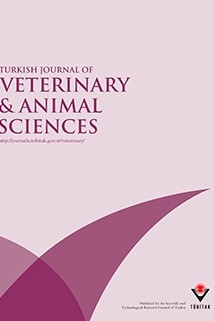
Turkish Journal of Veterinary and Animal Sciences
Yazarlar: Ahmet KOLUMAN, Berfin Melikoğlu GÖLCÜ, Okan DERİN, Sibel ÖZKÖK, Fabrizio ANNIBALLI
Konular:-
DOI:10.3906/sag-1211-39
Anahtar Kelimeler:Key words: Clostridium botulinum,Honey,PCR
Özet: Clostridium botulinum and rare strains of C. butyricum and C. baratii produce an extremely potent toxin, the botulinum neurotoxin (BoNT). Infant botulism is significant for both its high mortality rates and for the sophisticated treatment that it requires. Isolation and identification of C. botulinum according to standards depend on mouse bioassays to determine toxin-producing ability of strains. Polymerase chain reaction (PCR) is used to detect the types of toxins expressed by bacteria. Since honey is an important source of infant botulism, we determined the types of toxins secreted by C. botulinum strains and their antibiotic resistance. In this study, the first step was conducted to determine the prevalence of C. botulinum in different honey types; as the second step, antibiotic susceptibility of the strains was determined; and, finally, PCR typing of toxin genes was done. Nineteen strains were isolated from 250 honey samples. All C. botulinum strains were evaluated for BoNT types using PCR. BoNT type A was observed in 12 of the 19 (63.15%) strains, type B was observed in 3 (15.78%) strains, type F was recorded in 2 (10.52%) strains, and 2 of the 19 (10.52%) strains showed no amplification. All strains represented a resistance to amoxicillin and trimethoprim sulfamethoxazole (100%), followed with sulfamethoxazole and ampicillin (94.73%). Resistance to nalidixic acid was seen in 84.21%. The results show that different types of honey are contaminated with C. botulinum and toxin types also show different distribution. Additionally, antibiotic resistance patterns of the strains showed different distributions, which indicates obligatory application of antibiotic resistance testing for prevention of secondary infections.